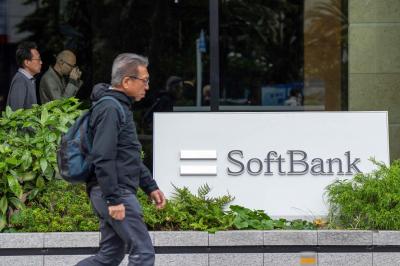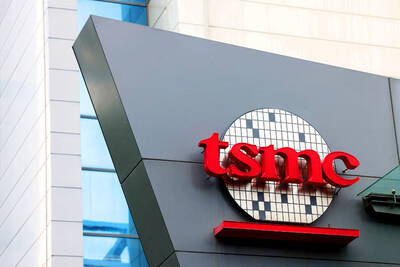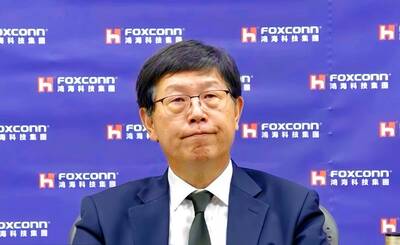The spread between Taiwan’s two and five-year interest-rate swaps will narrow as the central bank raises borrowing costs more in the coming year than money markets indicate, Morgan Stanley said.
To profit, investors should make fixed payments over a two-year period and receive floating rates for 60 months, the US bank said.
The central bank will lift its discount rate by 12.5 basis points every quarter through the end of June next year for a cumulative rise of 0.5 percentage points, it said in a research note dated on Friday. Rates on three-month negotiable certificates of deposits reflect bets for increases totaling 37.5 basis points, it said.
The recommended trade will deliver returns as the gap between two and five-year swaps, at 52 basis points now, shrinks to 20 basis points, Morgan Stanley wrote. Investors must cut losses should the spread widen to 62 basis points, the report said.
The central bank on June 24 unexpectedly raised its benchmark rate to 1.375 percent from a record-low 1.25 percent, citing a recovery in exports and improvements in the job market.
The economy grew 13.27 percent in the first quarter, government data showed. GDP may rise as much as 8 percent this year after having shrunk 1.9 percent last year, the Ministry of Economic Affairs said on July 8.
Central bank Governor Perng Fai-nan (彭淮南) on June 24 said the central bank hopes to keep real interest rates in “positive” territory.
In swap contracts, two parties exchange a fixed rate for a floating payment that varies in accordance with a benchmark interest rate.

Japanese technology giant Softbank Group Corp said Tuesday it has sold its stake in Nvidia Corp, raising US$5.8 billion to pour into other investments. It also reported its profit nearly tripled in the first half of this fiscal year from a year earlier. Tokyo-based Softbank said it sold the stake in Silicon Vally-based Nvidia last month, a move that reflects its shift in focus to OpenAI, owner of the artificial intelligence (AI) chatbot ChatGPT. Softbank reported its profit in the April-to-September period soared to about 2.5 trillion yen (about US$13 billion). Its sales for the six month period rose 7.7 percent year-on-year

CRESTING WAVE: Companies are still buying in, but the shivers in the market could be the first signs that the AI wave has peaked and the collapse is upon the world Taiwan Semiconductor Manufacturing Co (TSMC, 台積電) yesterday reported a new monthly record of NT$367.47 billion (US$11.85 billion) in consolidated sales for last month thanks to global demand for artificial intelligence (AI) applications. Last month’s figure represented 16.9 percent annual growth, the slowest pace since February last year. On a monthly basis, sales rose 11 percent. Cumulative sales in the first 10 months of the year grew 33.8 percent year-on-year to NT$3.13 trillion, a record for the same period in the company’s history. However, the slowing growth in monthly sales last month highlights uncertainty over the sustainability of the AI boom even as

AI BOOST: Next year, the cloud and networking product business is expected to remain a key revenue pillar for the company, Hon Hai chairman Young Liu said Manufacturing giant Hon Hai Precision Industry Co (鴻海精密) yesterday posted its best third-quarter profit in the company’s history, backed by strong demand for artificial intelligence (AI) servers. Net profit expanded 17 percent annually to NT$57.67 billion (US$1.86 billion) from NT$44.36 billion, the company said. On a quarterly basis, net profit soared 30 percent from NT$44.36 billion, it said. Hon Hai, which is Apple Inc’s primary iPhone assembler and makes servers powered by Nvidia Corp’s AI accelerators, said earnings per share expanded to NT$4.15 from NT$3.55 a year earlier and NT$3.19 in the second quarter. Gross margin improved to 6.35 percent,

FAULTs BELOW: Asia is particularly susceptible to anything unfortunate happening to the AI industry, with tech companies hugely responsible for its market strength The sudden slump in Asia’s technology shares last week has jolted investors, serving as a stark reminder that the world-beating rally in artificial intelligence (AI) and semiconductor stocks might be nearing a short-term crest. The region’s sharpest decline since April — triggered by a tech-led sell-off on Wall Street — has refocused attention on cracks beneath the surface: the rally’s narrow breadth, heavy reliance on retail traders, and growing uncertainty around the timing of US Federal Reserve interest-rate cuts. Last week’s “sell-off is a reminder that Asia’s market structure is just more vulnerable,” Saxo Markets chief investment strategist Charu Chanana said in